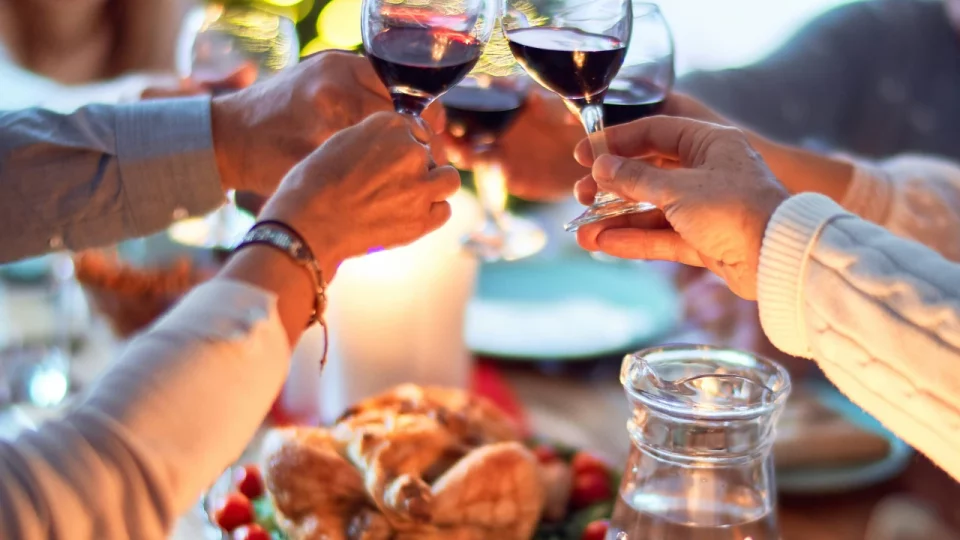According to experts, the traditional Thanksgiving dinner generates a notable carbon footprint, yet there are simple and effective ways to make this holiday more eco-friendly.
By making thoughtful choices, from sourcing local produce to reducing waste, families can enjoy a memorable celebration while minimizing harm to the environment.
Table of Contents
▶ The Carbon Footprint of Thanksgiving Dinner
Thanksgiving is synonymous with indulgence, yet this indulgence comes at a cost to the environment. According to Climate Trade, the average Thanksgiving meal produces a carbon footprint of approximately 103 pounds of carbon dioxide. This staggering figure stems from the production, transportation, and storage of food — particularly the Thanksgiving turkey, a centerpiece of the holiday.
The Environmental Toll of the Thanksgiving Turkey
The turkey’s journey to your table is far from simple. Data from Ndustrial, a food supply chain management platform, highlights the turkey’s environmental toll, including processing, refrigeration, and transportation. On average, a Thanksgiving turkey travels 760 miles across four trucks before arriving at its destination. Along the way, refrigeration plays a significant role in energy consumption, as the bird must be kept below 40 degrees Fahrenheit throughout its journey.
With 46 million turkeys consumed each Thanksgiving, the cumulative environmental impact is substantial. Experts suggest electrifying transportation routes and improving refrigeration efficiency to mitigate these emissions. Meanwhile, consumers can opt for locally sourced, natural turkeys to significantly reduce the associated carbon footprint.
Local Sourcing: A Simple Yet Impactful Solution
Purchasing local produce for Thanksgiving side dishes is another effective way to cut emissions. Shopping at farmers’ markets or choosing locally grown ingredients minimizes transportation-related emissions and supports regional agriculture. As Dune Ives, chief marketing officer of The Recycling Partnership, points out, “Not only are you supporting your local farms, but you can also purchase items in the packaging that nature provides.”
▶ Waste Not, Want Not: Managing Leftovers Responsibly
Food waste is a pervasive issue during Thanksgiving, with excess portions often ending up in landfills. According to the World Wildlife Fund, eliminating food waste could reduce global greenhouse gas emissions by up to 8%. In the U.S., food waste accounts for 24% of municipal solid waste, contributing to methane emissions from landfills.
Planning Ahead to Prevent Overbuying
The key to minimizing waste starts with careful planning. Estimating the correct amount of food based on the number of guests can prevent overbuying. Lauri Wright, director of nutrition programs at the University of South Florida, advises against purchasing a 30-pound turkey for a small gathering. Instead, scale the meal to match the size of your party while still including cherished dishes.
Creative Uses for Leftovers
Leftovers are inevitable, but they don’t have to go to waste. Sharing surplus food with guests or repurposing it into new meals can extend its usefulness. For instance, transform turkey, stuffing, and gravy into a hearty pot pie, or use cranberry sauce as a breakfast topping for bagels and toast. By thinking creatively, you can reduce waste and make the most of your holiday meal.
Composting: An Eco-Friendly Disposal Method
Composting food scraps is an environmentally friendly alternative to tossing them in the trash. Organic waste in landfills generates significant methane emissions, but composting converts this material into nutrient-rich soil. If composting is not an option, consider donating unopened food to local shelters or food banks.
▶ Eco-Friendly Decor: Celebrating Naturally
Thanksgiving decorations often add charm to the holiday, but they can also be a source of waste. Choosing sustainable decor, such as organic or reusable materials, can reduce your environmental footprint without compromising style.
Organic Decorations for a Natural Touch
Seasonal produce like gourds, squash, and apples can double as beautiful and biodegradable decorations. Non-food items such as hay, cornstalks, and dried leaves offer a rustic autumnal aesthetic and can be composted after use. However, avoid painting or coating these items, as this prevents them from decomposing naturally.
Recycling and Donating Non-Organic Items
For non-organic decorations, consider donating them to thrift stores or repurposing them for future holidays. Recycling empty food containers and beverage bottles is another simple step to reduce waste. Make sure items are clean and sorted correctly before placing them in the recycling bin.
The Case for Reusable Dishware
Disposable plates and cutlery may be convenient, but they generate unnecessary waste. Instead, use reusable dishware and cloth napkins to create an elegant tablescape that’s both sustainable and cost-effective. Fabric napkins, for instance, are not only stylish but can be washed and reused for future occasions.
▶ A Sustainable Thanksgiving: Small Changes, Big Impact
Transitioning to a more sustainable Thanksgiving doesn’t require drastic changes. Simple swaps and mindful decisions can significantly reduce the holiday’s carbon footprint. Here’s a summary of key actions to consider:
- Buy Local: Source turkeys and produce from local farms to reduce transportation emissions and support your community.
- Plan Wisely: Avoid overbuying by estimating portions based on the number of guests.
- Repurpose Leftovers: Get creative with leftovers to minimize waste and enjoy your meal for days to come.
- Compost Scraps: Turn organic waste into nutrient-rich soil instead of sending it to landfills.
- Use Sustainable Decor: Opt for biodegradable or reusable decorations to cut down on waste.
- Choose Reusables: Replace disposable plates and cutlery with washable alternatives.
By incorporating these strategies, you can celebrate Thanksgiving with both tradition and sustainability in mind. Every small change contributes to a healthier planet, ensuring future generations can enjoy the holiday as much as we do today.
